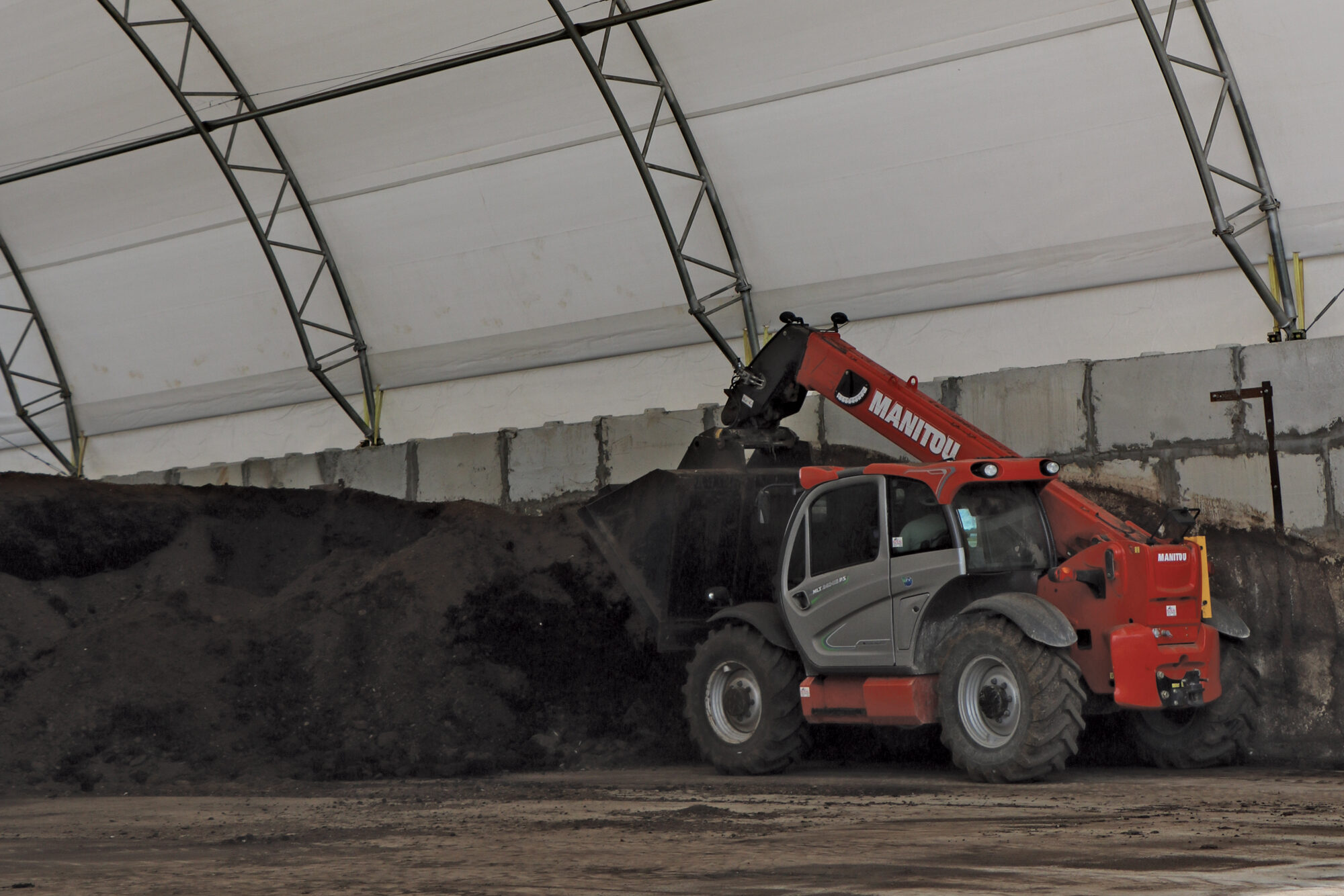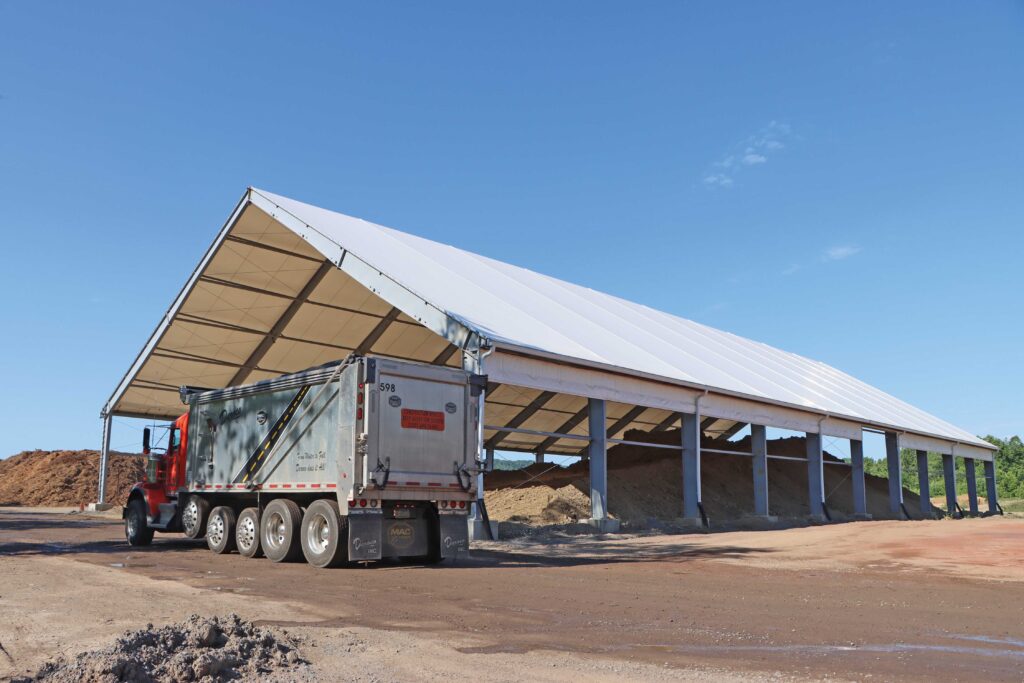Equine Waste Management: What To Do With Horse Manure
One of the most notable challenges in managing a stable or equine facility is controlling waste on the property. The average 1,000 pound horse can produce over 50 pounds of manure each day, which adds up to more than 10 tons over the course of a year.
If operations fail to implement an effective waste management program, they may quickly find themselves overwhelmed, and a number of issues can arise for both them and their horses. Not only is excess waste odorous and unpleasant to look at, but without proper storage, it can also contaminate food and water, raise the likelihood of mold presence and soften horses’ feet, making them more susceptible to ailments, like thrush.
There are many methods for storing and removing waste, some of which suit small-scale operations best, while others are designed for more commercial facilities with numerous barns and an abundance of acreage. It’s important for each operation to find the horse manure management system that works best for them, selecting their ideal storage solution and then choosing what to do with the waste they accumulate.
STORAGE SOLUTIONS FOR HORSE MANURE MANAGEMENT
Most commercial facilities utilize manure piles, storing large quantities in one convenient location, as opposed to using removable storage bins. If operations choose to stockpile manure in this manner, they need to assign a specific location for that waste, typically under a dedicated structure.
A rule many operations abide by is planning for 180 days of long-term manure storage. Whether they intend on composting that manure for field application or hauling it away to an off-site location, this gives them the flexibility and reliable coverage they need to manage manure properly over an extended period of time.
When designing a facility for manure storage, each operation’s needs will vary based on different factors, like the number of horses they care for, what they plan to do with that waste and their available equipment. While barns with less than 15 horses or that often pasture horses can get by with smaller, temporary bins, facilities that stable 15 or more horses will produce a large amount of manure, and need a space capable of protecting all that waste.
Permanent manure storage facilities will require certain key features to be considered adequate. First, each structure needs to be installed in a location that’s convenient to an operation’s barn, and the entryway should be wide enough to allow for easy access for equipment and vehicles, like a manure spreader or dump truck.

This will help operations work more efficiently, keeping waste organized and in close proximity to their stalls and paddocks. To streamline the collection process during waste removal, operations should also include bucking walls in their structure, as these enable equipment to push right up against the edges and gather manure quicker.
In addition to these features, operations will also want to install their structure downwind and screened from nearby homes. If done correctly, they should be able to avoid any potential complaints from neighbors regarding odors and unsightly appearances.
Throughout the design process, working with a manufacturer that has a wealth of experience building agricultural and equine structures is a must. However, operations can also get assistance from nearby resources, like their local Soil and Water Conservation District (SWCD) or Natural Resources Conservation Service (NRCS) offices.
Sign Up NOw To Learn More
WHAT TO DO WITH HORSE MANURE
When considering what to do with horse manure, two of the most common routes operations take are composting and disposal. Composting horse manure can be an effective option for those also producing crops, using it as fertilizer to enhance plant growth. Other facilities, who have no need for manure, can dispose of it off-site, either selling it, contracting a commercial service to come take it or hauling it away themselves.
COMPOSTING
For operations that want to turn their manure and stall waste into a composted pile, it can actually be a relatively simple process, if they are a more sizable facility. Larger piles make it easier to keep the composting process going, and with a reliable storage structure in place, operations can create an ideal environment to support the composting process.
Composting is a managed, accelerated breakdown of organic matter by microbes, including bacteria, fungus and molds. The ultimate goal of composting horse manure is to produce a nutrient-rich soil amendment, which can then be applied to fields to create a growing environment where crops can thrive.
Properly composted horse manure will have a blend of several key elements, the most important of which are carbon and nitrogen. Carbon-rich materials provide food for microorganisms to digest and include ingredients like straw, dry leaves, twigs, wood shavings, manure and more. Nitrogen encourages proper cell growth in microbes and can be supported by items like grass clippings, plant cuttings, fruit and vegetable scraps.

For the best results, operations should sufficiently mix their composted manure. This is often referred to as aerating or having to turn the pile, and it promotes uniform decomposition of composting materials.
Facilities will also need to ensure their compost pile contains the right carbon to nitrogen ratio (C/N), which is widely considered to be around 30:1. If operations have a lower ratio than this, nitrogen can be lost as ammonia gas, causing harsh odors.
OFF-SITE HORSE WASTE DISPOSAL
When facilities have no use for their fresh manure, the alternative to composting is to have that waste taken away from their site. In general, there are three ways to put this system into action.
Although it can require more time and effort, one possibility is for operations to sell their manure to composting companies, landscapers and nurseries. Selling manure can be a great way for horse facilities to give themselves an additional revenue stream, creating a source of funding that can be put towards various operational improvements.
Another solution is to contract with a commercial service or hauler who will come and remove the waste from the property. This can be a convenient and low-effort way for operations to tackle horse manure management, especially those with a large number of horses, but it often comes at a significant cost.
Horse facilities also have the option to purchase their own dump truck and transport manure themselves. This requires a substantial investment upfront, but may prove more cost-efficient over time than regularly contracting a trucking service.

Without an effective system in place, manure management can be an overwhelming process for even the most experienced horse owners. But, by obtaining a well-designed storage structure and implementing a strategy for either using or disposing of that waste, manure management for horses can not only be simplified, but actually become a task that benefits operations over time.
For more information on horse manure management and what to do with horse manure, call or Request a Quote today.
This post was originally published in December, 2016 and has been updated for freshness, accuracy and comprehensiveness.
Related Articles
Horses Are Happier In ClearSpan Buildings
Equestrians need the very best for their horses, and ClearSpan offers superior boarding and training arenas when compared to traditional barns.
Hay Selection & Storage
Considering that a majority of a horse’s diet is hay, it is important for horse owners to be selective when it comes to feeding and storing hay.
Looking For New Farm Buildings? Choose Fabric Structures
Fabric structures are the perfect agriculture building solution, because of their versatility and long-term dependability.
Horse Arena Footing
If setting up a riding arena for the first time, deciding on footing material is a topic one will have to address.

